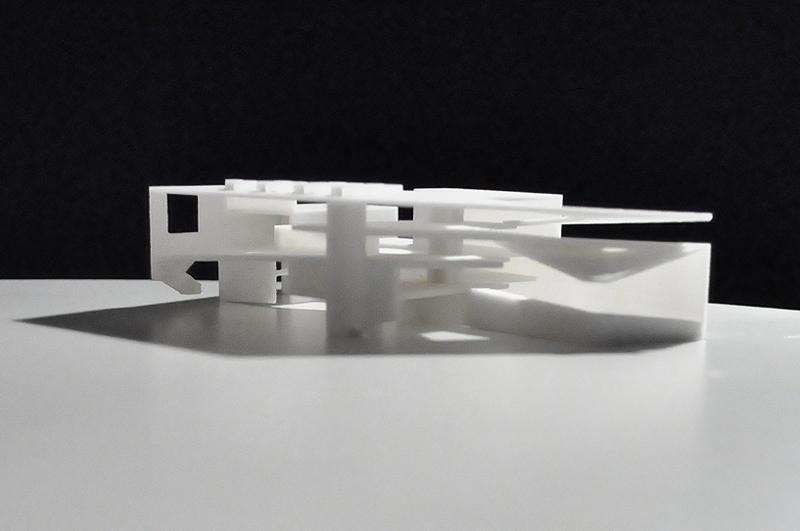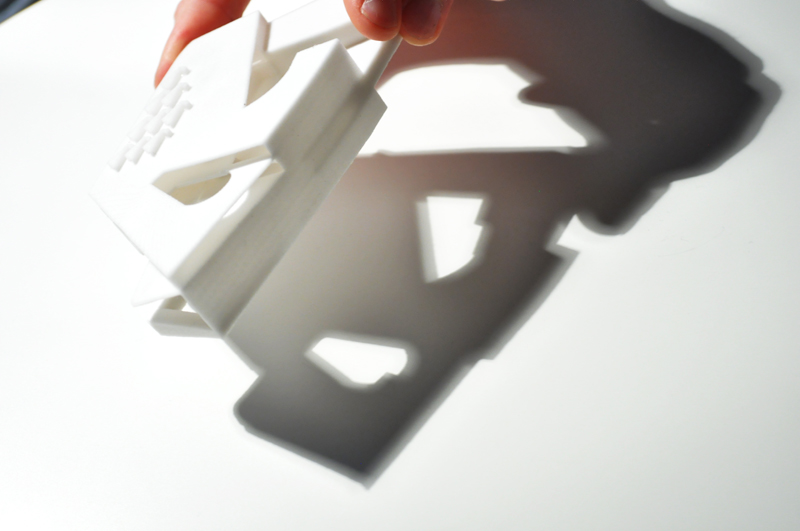Light has traditionally been the enemy of printed paper, forcing libraries to shroud knowledge in darkness. The transition of physical documents to non tangible forms of knowledge (stored as electronic data, transmitted through classes and conversation) provides an opportunity to let filtered light in; finally, the library can embody the metaphor of light as knowledge. The organising concept for the project is porosity; the permeability between a single all-encompassing library space and pockets of adjacent spaces (light wells, meeting rooms, courtyards).
The program is laid out in a linear sequence on a gentle habitable slope (1:18). This is interspersed with flat platforms for storage, meeting and work. This ribbon of connected spaces (forming one continuous room which accommodates reading spaces, storage, technology and community uses) folds in on itself in a constant loop allowing shortcuts across and upwards. This reflects both the random nature of curiosity and the hyper-textual navigation which has become second nature to users of a library of the future.
A landscape informed by a pre-European wilderness of wetlands is created. It is elemental and organic, shaped by the movement of wind, water and sand.
Architect
Stephen Collier
Collaborators
Jordan McIlroy
Martino Sacchi
Christen Meli
Sue Barnsley Design (Landscape Architect)
Consultants
Tim Elgood, Arup (Environmental Consultant)



